| Umělec magazine 2002/2 >> End of an Era | List of all editions. | ||||||||||||
|
|||||||||||||
End of an EraUmělec magazine 2002/201.02.2002 Vladan Šír | q & a | en cs |
|||||||||||||
|
"Significantly, one of the first and most important private contemporary art galleries has closed shop just as the political elite that formed post-totalitarian life in the Czech Republic over the past twelve years were voted out of office. On Sunday, June 23, the doors of Prague’s Gallery MXM closed for good. Amid the piles of catalogues and artwork belonging to artists who had just lost the roof over their heads, Umělec spoke to proprietor Jan Černý about money, artist loyalty, the generation gap, the 1990s and a few local collectors.
How do you feel after all these years as you start cleaning up the gallery? Absolutely normal. Actually, I feel a kind of light liberation. Was the gallery such a burden? Not really a burden. I think that this is quite normal for people when they move away from an established and time-consuming routine such as running a gallery for a long time. We were open on Saturdays and Sundays, and I spent most of those weekends here. So it is a liberating moment for me because I’ve got time for my kids all of a sudden. What made you decide to close the gallery? I remember you mentioned already last year that you were seriously thinking about it. What was the final reason? As you say, it was a long-fermenting decision based on the experience of the recent years. I’d say that it’s been about two years since the situation reached a kind of breaking point, and I started seriously thinking about closing. There are a number of reasons. Perhaps the most important and very pragmatic is money. Operating the gallery was financially very demanding, and if it’s to function on a certain level, present itself internationally, import foreign artists and participate in art fairs, it has to achieve a turnover of about CZK 4 million ($133,000 US) annually and that’s a huge amount. With a 30 percent margin, which is — as far as I know — a common practice in the Czech Republic, this is very strenuous. What was your turnover then? The turnover of the gallery over the past ten years I’ve been here was about CZK 32 million ($1,066,000 US). During the entire existence of the gallery it comes to about CZK 36 million ($1,200,000 US), which is about CZK 3 million ($100,000 US) a year. The past year suggested that the situation was getting worse. We had lower turnover than CZK 3 million, which I’ve always considered the limit of sustainability for the gallery. Why do you think that is when the Czech economy is beginning to pick up speed, GDP is on the rise, inflation is declining and business conditions should be finally improving? There are other reasons. We’ve witnessed such things as the start of Gallery Tvrdohlaví and some of our artists are represented and also sell through this gallery. A lack of interest, buyers and collectors in the Czech Republic has forced artists to try and sell under any condition. This makes them feel that they have to be represented by a number of galleries because then they have a better chance of being presented and satisfy their potential collectors. This had a certain impact on the consistency of the gallery, as it had presented itself throughout the 1990s. Then there were sales by artists directly from their studios. I’m not naive enough to think that this wasn’t happening here. It’s always happened. It is a question of the artists’ loyalty to their gallery. I’d like to stress, however, that it is very difficult for them to be loyal when there’s not much interest in art; it’s difficult to rely on one subject to sell their things and present them. I had sympathy for this practice. What was the state of your stable of artists? Did you search out new ones? Did you try to form a group of more loyal artists? We’ve taken on a number of new artists for exhibitions in the previous years. We presented them much more intensively than the artists in our original stable. I can’t remember the last time we showed [Martin] Mainer, [Jaroslav] Róna, [Petr] Nikl, [Stanislav] Diviš at an exhibition. We’ve presented young people like [Michal] Pěchouček, [Alena] Kotzmannová; we’ve worked a lot with the group Pode Bal. We showed the group Rafani at our last exhibition. Do you think this might have caused a problem with loyalty with the older generation of artists? Maybe this contributed to it. But the gallery didn’t want to come across as being a conservative gallery in the 1990s. I thought that we’d be able to go with the times, to be topical and at the same time to maintain the older part of the gallery. I thought that the mid-generation would be on such a level that it wouldn’t be all that interested in the kind of experimental exhibitions and projects that we were doing with the young artists. On the contrary, we tried to come up with more conservative projects specifically for them. We’re still working on an exhibition for the Mánes gallery called Trinity, which will include Stanislav Diviš, Tomáš Císařovský, and Jan Merta. It will be sort of a cross-section of their work from the end of the 1980s and the 1990s. I think this concept fits these artists better than being shown alongside the young artists. The projects we made in Berlin or Lisbon were based on completely different media, reflecting a lot photography and film, which the older generation is not involved in. It’s hard to combine absolutely classic paintings with projects based on a completely different approach, such as Pode Bal and their politically and socially engaged projects. This all caused a certain friction in the gallery’s consistency. Perhaps it’s also my fault. Perhaps I shouldn’t have maintained the two different positions of the gallery at any price — both the older generation and the avantgarde, or new. Having only a little distance from the gallery, I can see that I’d do things totally differently. You’ve said that the reasons for closing the gallery were money, friction in the position, and lack of loyalty. Were there any other reasons? There’s certainly the fatigue factor. We did the real gallery work until 1997, which means we were participating in art fairs; we were able to cover our operations from sales. Our presentations were great, and they were sufficient enough to find buyers and people interested in contemporary art. The year 1997 was sort of a breaking point, and since then it’s been more about scrapping for money and cutting costs, searching for some alternative ways to make exhibitions outside the gallery and how to fund the gallery. It was more of a hunt for money. This was devastating for me, and I don’t enjoy it because then your contact with art is limited. The general notion of a gallery proprietor is that you only work with art, you drown in paintings and you’re completely surrounded by them. Unfortunately, this is not true. Working with art, selecting works, visiting artists’ studios makes up about 10 percent of the activities. The remaining 90 percent is normal managerial work, how and where to find an exhibition space, how to get money you’re owed for three years. Is this one of the aspects artists didn’t appreciate enough about the gallery? Do you feel underappreciated? I wouldn’t say I’m underappreciated. Everybody here had a certain position, within which he or she could move freely. We were not a closed group in which we’d pat each other on the back or trip one another up. Everybody was perfectly free and could decide on things in his or her own way. MXM had a unique position in the 1990s. It wasn’t solely a commercial gallery, and it had an art historical and theoretical background. How do you look at this period from today’s perspective? At the beginning of the 1990s, the gallery was built as a certain grouping of elements that were supposed to be mutually linked. On the one hand it was supposed to serve as a meeting place, where artists could meet with artists, where artists could meet with the public; it was to be a place for discussion between artists and theorists and gallery proprietors. And discussions did take place here; there were thousands of meetings here. But over time this aspect of the gallery vanished. The attachment to the late 1980s wave, i.e. the theoretical wave completely dominated by [Jana and Jiří] Ševčík at that time, was quite logical. There were about nine artists in this gallery who were, to a certain extent, closely connected with theorists such as the Ševčíks. So the link to the theorists and the Ševčíks at the beginning of the 1990s was absolutely logical. I really admired what the Ševčíks were doing. They were basically my teachers, because I came to the gallery from a different field. I’d studied economics. I welcomed the chance to get some sort of education in art history, and the Ševčíks were involved in it more than anybody else. I felt like I got a theoretical degree from the Fine Arts Academy in the five years I worked here. What happened later on, though, was that the opinions of artists and theorists began to differ. Theorists developed much faster than some artists, who maintained unwavering positions. The theoretical part of the gallery surpassed the older generation with which the gallery had originally opened. This is why friction between exhibitions [MXM organized outside its gallery space] and represented artists occurred. We’ve tended to take young artists, or we made concepts that were not suitable for the older generation of artists in the gallery. Today the friction is quite clearly visible from the outside. If you had focused the gallery purely on the oldest generation of contemporary artists, would it have been easier for you? To a certain extent it would have, because these people developed their collectors and supporters over many years. I admire their work, and I have deep feeling for it — Malich, Kolíbal, I really like Šimotová. On the other hand, I needed to attempt something more contemporary, something different. I’ve never considered [the gallery] a business, a strictly managerial activity. I’ve always looked for something for myself in it, something I enjoyed, to excite and attract me. Could you say that there is a market for young art? The generation of the youngest artists is beginning to become a little bit distant from me. I’m twelve, fifteen years older than the emerging generation, which has its own audience around it. I can understand their art, but I’m not able to find collectors and buyers for them. I don’t think that there is no market for them, but I’m just not able to address that market. How was the development of your collectors throughout the 1990s? The best years were up to 1995. It looked as if various people and institutions were beginning to build up their collections. We assisted Komerční Banka with their collection. Then the first economic crisis occurred — this mainly concerned banks, which fell into the red for the first time. Naturally the first thing you do in such a situation is halt all money going to culture. It’s much easier, and it doesn’t put anyone in danger: it’s far better than firing 13,000 people. Economic troubles made a great impact on the art collecting by institutions and private collectors. In the optimistic atmosphere after 1989, people started up new businesses and began making money. After the first problems came up they limited their purchases. People started to realize the value of money and today they make much more responsible and careful decisions than was the case up to 1995. Did state institutions buy art from your gallery during the 1990s? No. The only exception from the entire circuit of state institutions was the Ministry of Foreign Affairs. They buy art, and I think they will continue to do so. The Ministry has about 150 embassies and offices around the world. They like to present themselves as representatives of a modern country, and contemporary art on the walls of embassies helps portray this to a certain extent. How many collectors do you work with? It’s up to about twenty, for sure. A collector for me is somebody who buys more than two paintings. Collectors of contemporary art do not present themselves as such to the public. Are there any collectors who have valuable collections? There are collections of note, in both quantity and quality of works. Collectors of avantgarde works include Richard Adam, who is not very vocal because he’s got the stuff at home and it’s not publicly accessible. Daniel Dvořák, head of the National Theater, is also something of a collector, and his art is more accessible, as it is in his office. Marek Šoltés is also one of the big collectors. Those are all private people who’ve been collecting for about ten years. How did the price of works develop? This was one of the problems in this gallery. I’ve got to maintain the balance between the collector and the artist. The artist tries to get as much money for his painting as possible. The collector’s interest is to buy the painting for as little money as possible. If a gallery proprietor doesn’t want to lose a collector, he needs to accommodate him. If you don’t want to get into an argument with an artist, you try to accommodate him too. It often happened that the artists were reluctant to come down in price to where I thought it was reasonable. This is absolutely essential for a gallery proprietor. If you can’t agree on a price, and you don’t feel it the same way as the artist, it is a problem to present and convince the buyer that it is a good price. Unfortunately, this gap got increasingly larger over time. Since the local market can’t keep up with the prices, do you sell abroad where they should be a bit more acceptable? The idea that it’s more acceptable abroad is nonsense. People in the West don’t jump in headlong to buy art. They’re always trying to base the acquisitions on something, and they make their own prices too. The thing is — however you look at it — our artists are not famous in the West, unless we’re talking about Czech modernism, cubism, and so on. But the people that I represented don’t have a name in the West. And when you negotiate a sale, you’re not in a very good position. The fact that they’re unknown helps the buyer to negotiate the price as low as possible. Since there’s no functioning market here and there are not enough exhibitions, what establishes the price of an artist’s work in the Czech Republic? Young artist Milan Salák recently came up with a system of points [for each exhibition]… The price of an artist is on the one hand determined by quality, the notoriety that comes from the exhibition he or she has participated in, and this suggests the person’s viability. If an artist has participated in 150 exhibitions, it is proof of his or her quality. This creates pressure on the artist to be always topical and visible. Because of this, the artist is always on top of things, which is also an important factor in determining whether his or her art will be able to survive some period of time, and this in return has an impact on the price. If you haven’t participated in an exhibition, a certain inter-artistic confrontation, your price is basically zilch. When you talk about sales, you always use the example of paintings. Does this mean that paintings are the biggest selling item? Paintings make up the majority of what Gallery MXM sells. What percent would it be out of the total sales? I’d say it’s about 80 percent. And the rest is? The rest is prints, photography. Has the proportion of these media changed over the past ten years? It remains the same. Why do you think paintings are still so attractive? It’s very simple. You can hang a painting above your couch at home. It’s a traditional tool for decorating interiors. It’s simply a traditional medium. Isn’t the reason for low sales the fact that a number of artists — especially the younger ones — don’t make paintings anymore? This is certainly a part of the problem. The other problem is that the quality of works in this tiny territory is not astounding at all. I can’t remember a single recent achievement of significance by an artist, one which would address western curators or collectors so that they might say to themselves: “This is a new thing; it’s high quality; this will circulate in exhibitions.” It’s connected with the fact that we’re a small country, a small nation lacking money. We aren’t able to push things through to big exhibitions. The thing is, art today is very much disintegrated — this is not only the case in this country, it’s an international phenomenon. Today you won’t find a style-defining tendency in art that would suggest development for the next ten years, as was the case with pop art in the 1960s and abstract art before that or cubism even earlier. So contemporary art is incomprehensible to society? Today, when contemporary art starts quoting older art that is itself unknown, it creates certain loops that are comprehensible only to a certain circle of people who have been working in the arts for a long time. To a certain extent, it’s incomprehensible for people who are just not in. Do you think the state should intervene and work as some kind of educational body under these circumstances? Definitely. At the very least the state should invest in exhibition spaces that could put on shows with international artists participating, so that we can compare. Exhibitions work as a kind of a filter. They show what is and what isn’t quality work, what attracts people’s attention, what is viable. What are your plans now? First I’ve got to clean up here. In addition to having a gallery license, I’m also a partner in a production company. It will make business in producing large-scale international exhibitions and the finances should come mainly from abroad. The exhibitions will take place both in the Czech Republic and abroad. We’ve produced the Czech participation at the Venice Biennial for the National Gallery for the past two years — this year we’re doing architecture, last year it was contemporary art. We’re currently working on an exhibition at the Prague House in Brussels. We’re planning to produce an exhibition of Dutch art. If we find some kind of mainstream that is viable for the company, we’ll certainly favor this trend and look for our position on the market. This is a new thing for us, so I can’t say right now what position I will have. How do you want to produce exhibitions when, as you say, there aren’t enough galleries? There are quite enough exhibition spaces, but there isn’t enough money to make quality shows in them. Mánes and Špála Gallery are beautiful spaces. But those two spaces have their own production teams… They do have their teams, but if you offer them money, they will gladly give up a space in their calendar. Basically, they’ll sell it. We want to act more as producers rather than curators. This is why we want to offer cooperation and find financial backing for curators who would be responsible for the quality of exhibitions and selected artists. I’d like to avoid curating and mounting exhibitions, because for the past seven years I’ve been in charge of that here. Now I’d like to do a little bit different work in the exhibition services. There’s a terrible lack of management skills in art in the Czech Republic… Right. Once there was an idea which came from here [MXM Gallery] about whether there should be a little cell established at the Fine Arts Academy, one which would deal with artistic management, where experienced people could pass on their skills — not only in visual art but also in film, photography and the decorative arts. However, this is absolutely infeasible for the Fine Arts Academy. Perhaps this will change in the future. I think that it’s just a matter of time before this is established at one of the schools. Education in this field is lacking here. What will happen with the artists that you represented and the collectors you were selling to? If the artists are good, they’ll be able to establish themselves on the scene sooner or later — either by themselves or they will move on to another gallery. But right now I can’t say which ones. What was their response to your decision? The response was mostly reasonable. They understand it. I’m backing everything here with my own property and now I’m hitting red lights. I can’t go on like this unless I want to get in trouble and run the risk of having my house confiscated. I’ve tried to find a way to maintain the gallery as a manager; we had various parties to help with sales, but it’s never met the objectives we outlined beforehand. Nothing worked even after a lot of attempts at revival and restructuring. Hence the result. Of course you hear voices that it’s a pity to close a gallery that has belonged to some of the best places in Prague for the past twelve years. On the other hand, there was nobody who wanted to continue running the space. But it’s your company. Isn’t that why? Yes, I made the trademark and space available, but there was no serious interest in continuing with it. There were a few people at first, but when they found out what running a gallery requires, and the economic side of the operations, they stopped negotiating. Will you ever go back to running a gallery? Not in the near future. But I don’t rule out the possibility. If I were to go back to it some day I’d do it in a completely different way. I wouldn’t allow any schizophrenic friction in the gallery, and I’d focus more on the avantgarde. "
01.02.2002
Recommended articles
|
|||||||||||||
|
04.02.2020 10:17
Letošní 50. ročník Art Basel přilákal celkem 93 000 návštěvníků a sběratelů z 80 zemí světa. 290 prémiových galerií představilo umělecká díla od počátku 20. století až po současnost. Hlavní sektor přehlídky, tradičně v prvním patře výstavního prostoru, představil 232 předních galerií z celého světa nabízející umění nejvyšší kvality. Veletrh ukázal vzestupný trend prodeje prostřednictvím galerií jak soukromým sbírkám, tak i institucím. Kromě hlavního veletrhu stály za návštěvu i ty přidružené: Volta, Liste a Photo Basel, k tomu doprovodné programy a výstavy v místních institucích, které kvalitou daleko přesahují hranice města tj. Kunsthalle Basel, Kunstmuseum, Tinguely muzeum nebo Fondation Beyeler.
|


























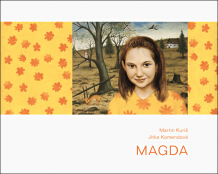




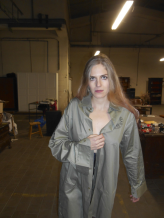
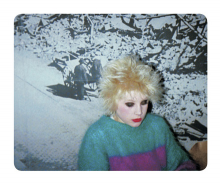
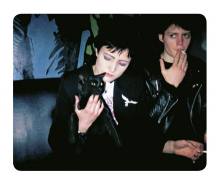
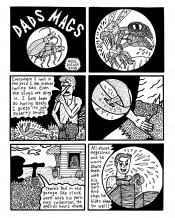


 We Are Rising National Gallery For You! Go to Kyjov by Krásná Lípa no.37.
We Are Rising National Gallery For You! Go to Kyjov by Krásná Lípa no.37.
Comments
There are currently no comments.Add new comment